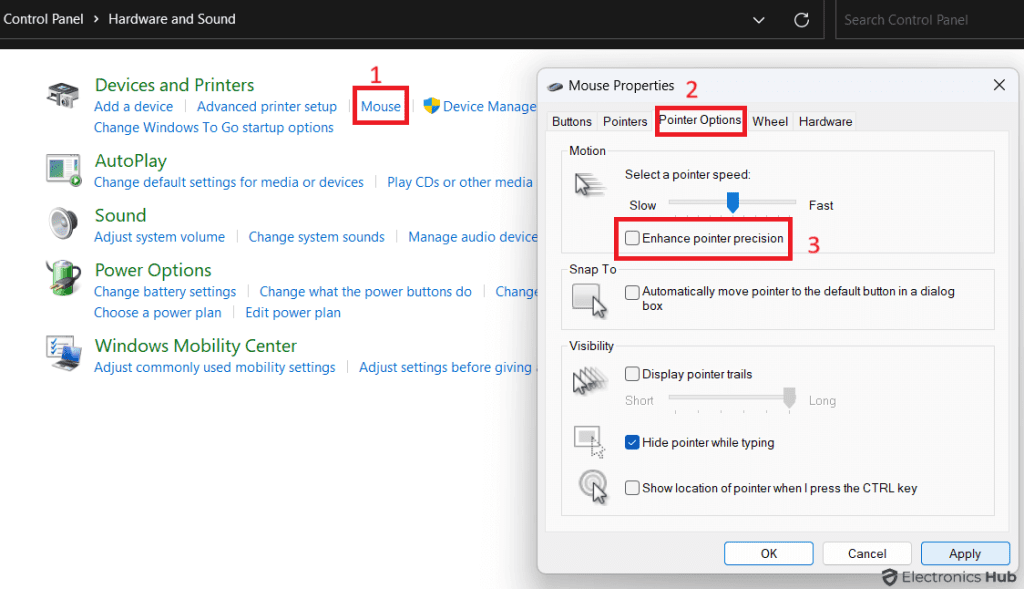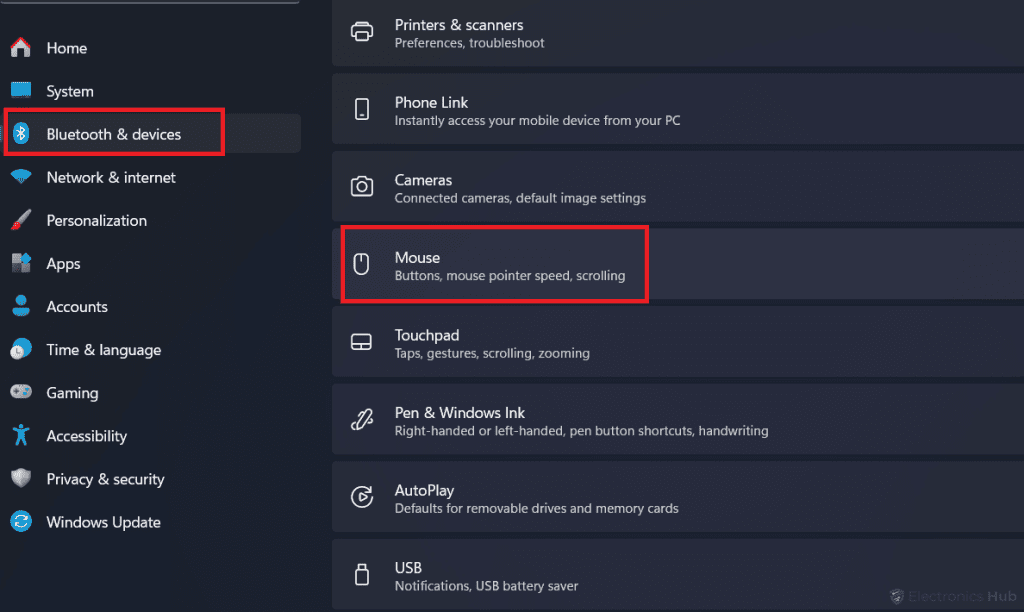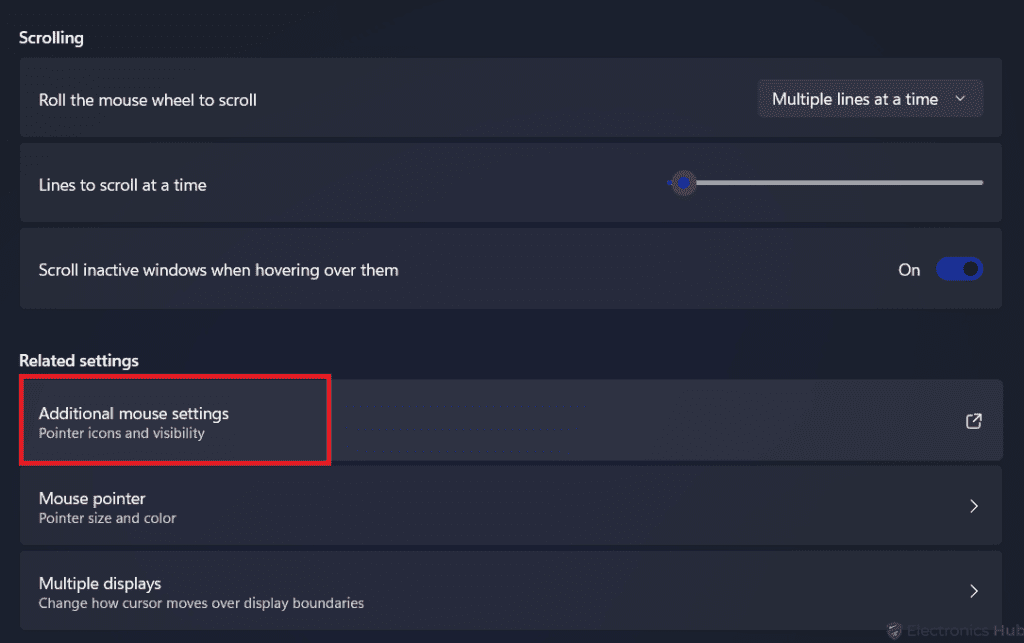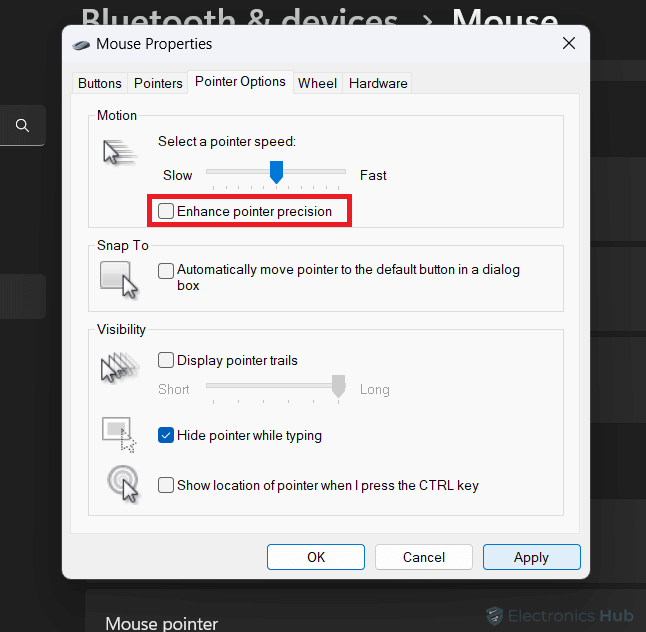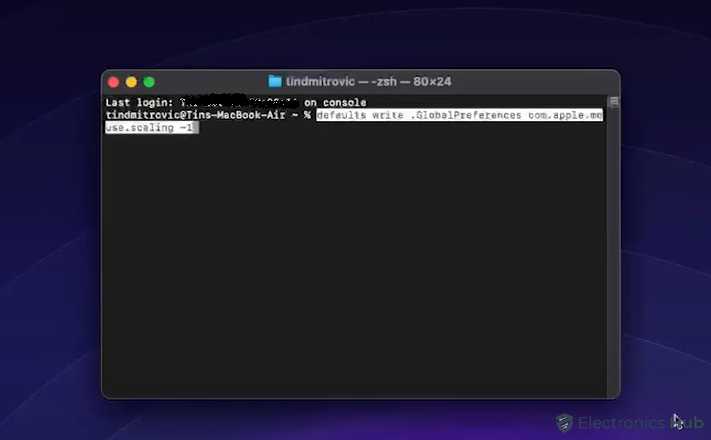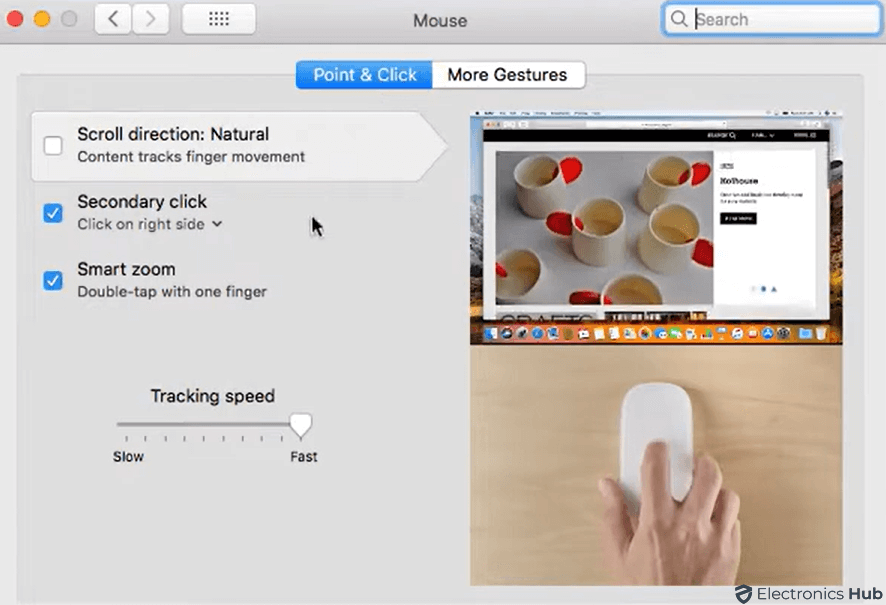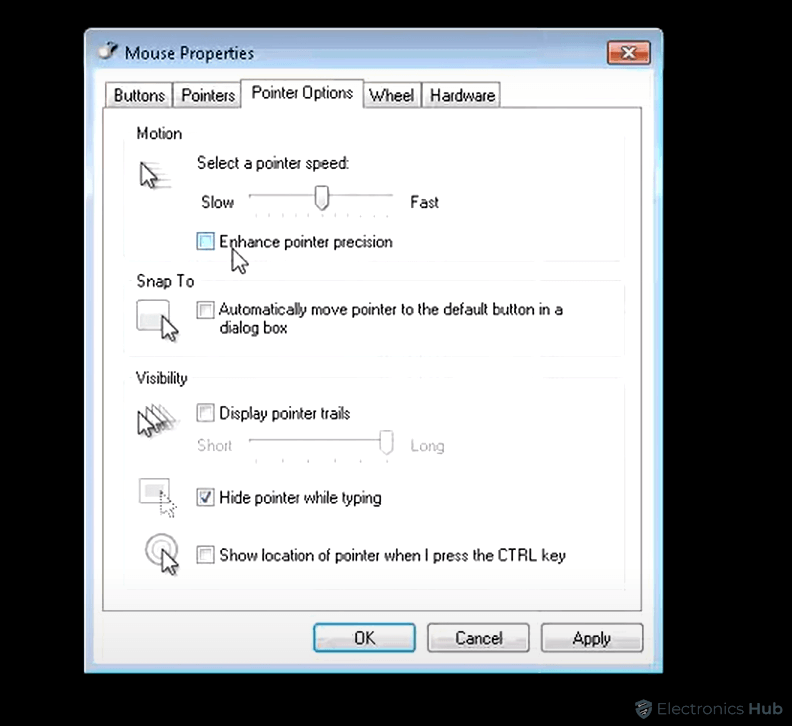Tired of your cursor pulling off unexpected stunts and playing hard to aim in games or delicate design tasks? Say hello to the villain behind it all – mouse acceleration.
Initially designed to boost pointing accuracy by adjusting cursor speed, this seemingly helpful feature often backfires. Gamers and those needing precise control can relate to the frustration of wonky aiming, jumpy movements, and overall chaos.
But fear not! Picture a world where your cursor obeys your every move, matching your hand’s every flick and click. Guess what? That world can be yours! All it takes is disabling mouse acceleration.
Ready to seize control of your cursor and unleash your true potential? Dive into this guide and learn how to deactivate this pesky feature on Windows, Mac, or older Windows systems. Get ready to conquer the digital realm with pinpoint accuracy!
Outline
Toggle- What Exactly is Mouse Acceleration?
- Different Variations of Mouse Acceleration
- Why Turning Off Mouse Acceleration Matters?
- What are the Popular Games that Experience Improvements When Mouse Acceleration is Disabled?
- How to Disable Mouse Acceleration on Different Operating Systems?
- When Is It Beneficial to Keep Mouse Acceleration Enabled?
- Turn Off Mouse Acceleration – FAQs
- Conclusion
What Exactly is Mouse Acceleration?
Mouse acceleration is like a secret superpower for your cursor. It’s a clever software feature that adjusts how far your pointer travels based on the speed of your mouse movement. The faster you go, the further it jumps!
This nifty tool is designed to boost your pointing efficiency, letting you cover more ground on your screen with just a flick of your wrist. It’s perfect for zipping around the web or gliding through documents with lightning speed.
But here’s the catch: mouse acceleration isn’t everyone’s cup of tea. If you’re all about precision and crave control over your cursor, this feature can be a real buzzkill. Its unpredictable, non-linear movements can turn even the simplest task into a frustrating challenge.
So, whether you embrace the acceleration or prefer to keep things steady, remember that the choice is yours. After all, it’s your digital journey to navigate!
Different Variations of Mouse Acceleration
Before delving into disabling mouse acceleration, let’s first explore the various types of mouse acceleration and their mechanisms. This will provide us with a better understanding of the subject matter.
- Positive Acceleration: This is the most prevalent type and the default setting in most operating systems. As the name suggests, it accelerates the pointer speed as you move the mouse faster. Consequently, the cursor covers a greater distance on the screen the more you physically move the mouse, exponentially magnifying your movements. Although it may appear faster for traversing long distances, it can result in imprecise movements and inconsistent control over the cursor.
- Negative Acceleration: This uncommon type of mouse acceleration functions in reverse. When you move the mouse at a faster pace, the pointer speed actually diminishes. While this may seem counterintuitive, it proves advantageous for tasks demanding exceptional precision in cursor control. By reducing the cursor speed at higher velocities, users can make subtle adjustments with enhanced accuracy. Nevertheless, it necessitates a distinct learning curve and may not be universally suitable.
Furthermore, certain operating systems and software provide the option to customize acceleration curves. These curves empower users to precisely adjust the acceleration behavior according to their personal preferences. For instance, it is possible to design a curve that facilitates rapid navigation by enabling positive acceleration at lower speeds, while ensuring accuracy in precision tasks by incorporating negative acceleration at higher speeds.
Why Turning Off Mouse Acceleration Matters?
Discover the game-changing advantages of turning off mouse acceleration, especially for those seeking ultimate precision in cursor control:
- 🎯 Enhanced Accuracy: Whether you’re gaming, designing graphics, or editing videos, precise cursor control is paramount. Bid farewell to the unwelcome variability introduced by mouse acceleration that hampers your accuracy.
- 🖱️ Consistent Control: Disable mouse acceleration, and witness the seamless reflection of your hand movements in cursor motion. Experience the joy of predictable and unwavering control.
- 💪 Reduced Fatigue: Constant adjustments due to acceleration can strain your hand and wrist, leading to fatigue. By disabling it, you can bid farewell to the discomfort and embrace long-lasting comfort.
- 🎨 Personal Preference: Say goodbye to the distracting unpredictability of mouse acceleration. Embrace the natural, one-to-one movement offered by disabling this setting. It’s all about your personal preference.
Unleash the potential of precise cursor control by turning off mouse acceleration. Your journey towards optimal performance starts now!
What are the Popular Games that Experience Improvements When Mouse Acceleration is Disabled?
- First-Person Shooters (FPS): Games such as Fortnite, Counter-Strike: Global Offensive, and Valorant rely on precise aiming for competitive triumph. By disabling mouse acceleration, players can achieve a seamless connection between hand movements and in-game aiming, resulting in enhanced accuracy and headshot potential.
- Real-Time Strategy (RTS): Titles like Starcraft 2 and Age of Empires necessitate swift and precise cursor movement to command units and issue orders. Turning off mouse acceleration enables faster and more accurate unit selection and execution of commands.
- Multiplayer Online Battle Arena (MOBA): In games like League of Legends and Dota 2, precise aiming and rapid reflexes are paramount to success. Disabling mouse acceleration grants better control over skillshots and allows for quicker reaction times during intense teamfights.
- Other Genres: Games like Minecraft, where building and precise placement are essential, also benefit from disabled mouse acceleration. It enhances control and accuracy, elevating the overall gaming experience.
How to Disable Mouse Acceleration on Different Operating Systems?
After understanding the disadvantages of mouse acceleration and its negative impact on specific tasks, let’s delve into the steps for disabling it on different operating systems. We’ll explore the procedures for Windows, macOS, and older Windows versions, empowering you with the expertise to have full control over your cursor on multiple platforms.
1. Disable Mouse Acceleration Feature on Windows 10/11
Windows 10/11 are the most popular versions of Windows OS right now and are used by a lot of hobbyists as well as professional gamers. If you are also using Windows 10/11, follow the steps given here to turn off mouse acceleration. You have two methods to choose from:
By Using Control Panel:
- Open the Control Panel. You can do this by searching for “Control Panel” in the Start menu.
- In the Control Panel, click on “Hardware and Sound.”
- Under the “Devices and Printers” section, click on “Mouse.”
- In the Mouse Properties window, go to the “Pointer Options” tab.
- Uncheck the option that says “Enhance pointer precision.”
- Click “Apply” and then “OK” to save the changes.
By Using System Settings:
- Open the Settings app. You can do this by pressing Win + I or clicking on the Start menu and selecting “Settings.”
- In the Settings window, click on “Devices.”
- Click on “Mouse” from the appeared list.
- Under “Additional mouse options,” it will open the Mouse Properties window. Go to the “Pointer Options” tab.
- Uncheck the option that says “Enhance pointer precision.”
- Click “Apply” and then “OK” to save the changes.
By following these steps, you can disable mouse acceleration on Windows 10/11 and enjoy the benefits of a more precise and consistent cursor control experience.
2. Disable Mouse Acceleration Feature on MacOS
For MacOS users, the process is slightly different. You have two methods to choose from:
By Using Terminal:
- Open the “Terminal” app, located in the “Utilities” folder within “Applications,” or use Spotlight by pressing Command + Space and typing “Terminal.”
- In the Terminal window, enter the following command and press Enter
| defaults write.GlobalPreferences com.apple.mouse.scaling -1 |
- After entering the command, you may need to restart your Mac or log out and log back in for the changes to take effect.
- If you want to revert to the default settings, use the command:
| defaults delete.GlobalPreferences com.apple.mouse.scaling |
By Using System Settings:
- Click on the Apple logo on the main screen and open “System Preferences.”
- Find and open the “Mouse” section.
- Here, you can adjust the tracking speed of your cursor in relation to mouse movement. While this won’t eliminate mouse acceleration entirely, it will minimize its effects.
Disable Mouse Acceleration Feature on Windows 7/8
For users still holding onto Windows 7 or 8, the process of disabling mouse acceleration differs slightly from the newer versions. Here’s how it’s done:
- Search for “Mouse” in the computer’s search bar.
- Click on the mouse option with a 3D icon to access mouse settings.
- Head to the “Pointer Options” tab, where you can find various options and parameters related to your mouse.
- Then, simply uncheck the box that says “Enhance pointer precision” and click “Apply”.
When Is It Beneficial to Keep Mouse Acceleration Enabled?
While disabling mouse acceleration generally offers significant benefits for precise tasks, there are a few scenarios where keeping it enabled might be advantageous:
- Limited Desk Space: For users with limited desk space or users with small mouse pad, mouse acceleration can help navigate the screen more efficiently. The increased cursor travel distance allows you to cover larger areas with smaller physical movements, maximizing your limited workspace.
- Trackpad Use: When using a trackpad on a laptop, the limited physical space can hinder precise cursor control. Mouse acceleration can compensate for this limitation by amplifying cursor movement, making it easier to navigate the screen without needing large trackpad gestures.
- Personal Preference: Some users simply prefer the feel of mouse acceleration. The increased cursor speed can feel more intuitive and comfortable for certain tasks, particularly for casual browsing or everyday computing.
- Specific Software Compatibility: Some software applications might be designed with mouse acceleration in mind. If you rely on such software, disabling acceleration could disrupt its functionality or require additional adjustments.
- Specific Accessibility Needs: For users with motor control difficulties, mouse acceleration can alleviate the strain of performing large physical movements. The amplified cursor movement can make it easier to navigate the screen without requiring precise hand movements.
Ultimately, the decision to keep mouse acceleration comes down to personal preference and specific needs. If you primarily engage in tasks that require precision, such as gaming or graphic design, disabling it is generally recommended. However, for those with limited space, trackpad users, or individuals who simply prefer the feel of acceleration, keeping it enabled might be the more suitable option.
Turn Off Mouse Acceleration – FAQs
Ans: Disabling mouse acceleration can provide more consistent and predictable cursor movements, making it easier to control and aim precisely, particularly in activities like gaming or graphic design.
Ans: You can test mouse acceleration by moving the mouse at various speeds and observing the cursor movement on the screen. With acceleration disabled, the cursor should move a consistent distance regardless of how quickly or slowly you move the mouse.
Ans: Yes, you can adjust mouse sensitivity without enabling acceleration. Use the sensitivity settings available in your operating system or third-party mouse software to control how fast the cursor moves in response to mouse movements, while keeping acceleration disabled.
Ans: Yes, there are third-party tools available for Windows, macOS, and Linux that allow more granular control over mouse settings, including acceleration. Examples include “POV Hat Mouse” for Windows and “libinput” for Linux. However, use third-party tools cautiously and ensure they are from reputable sources.
Ans: For many gamers, turning off mouse acceleration can improve precision and consistency in aiming, making it easier to control in-game movements. However, preferences vary, so it’s advisable to experiment and find settings that suit your personal preferences and playing style.
Conclusion
Disabling mouse acceleration can greatly enhance precision and control, particularly for activities like gaming, graphic design, and video editing. It eliminates erratic cursor movement, resulting in more accurate actions and reduced frustration.
However, your decision should ultimately be guided by personal preference and specific needs. Users with limited desk space, trackpad users, and those who simply prefer the feel of acceleration may find it beneficial to keep it enabled.
If you’re looking to disable mouse acceleration on your computer, you’ve come to the right place. This guide provides comprehensive instructions on how to disable mouse acceleration on various systems.

